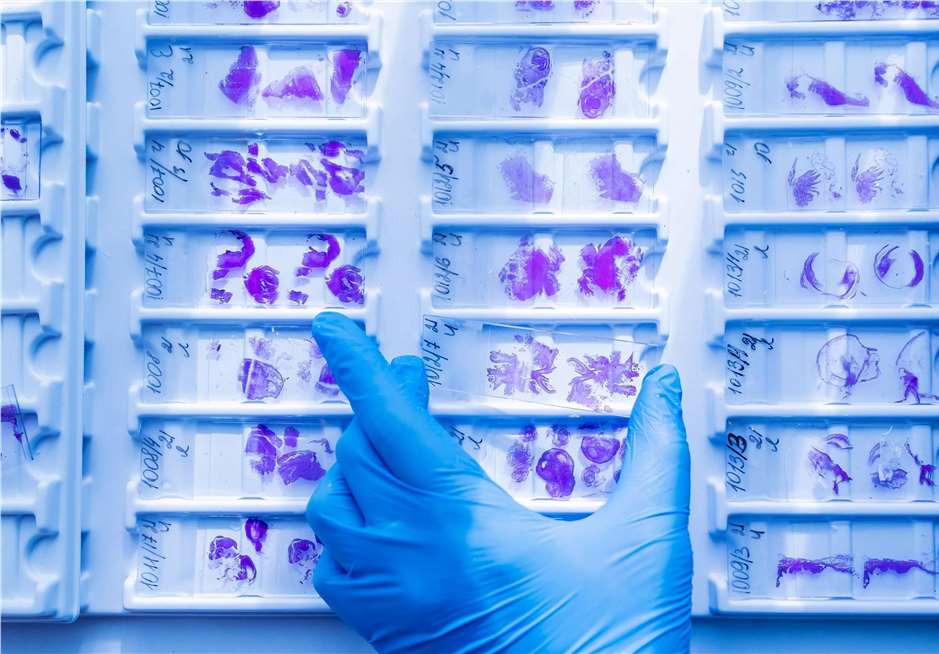Tissue dissection, processing, and embedding are very critical to the preservation of tissue morphology and the quality of staining. The purpose of this document is to highlight some tips to avoid artifacts commonly observed in FFPE tissue section. We hope that each step provides a valuable reminder of good histology practice and helps with troubleshooting when unacceptable results do occur.

1. Wrinkles/Waves
| Problem | Solution |
| When sectioning, section compression (due to warm block or dull blade) causes wrinkle to form. | Submerge the block for 5-15 min in the ice bath for gentle hydration. |
| Accumulated wax or static electricity on microtome parts also contribute to section compression. | Gently and gradually lay FFPE sections onto water bath surface, lengthwise. |
| Tissue incompletely infiltrated with wax absorbs water faster during hydration step. When sections from such blocks are floated, the parts that absorbed enough water will have difficulty flattening and become wavy. | Increase flotation times and/or temperature of the water bath. |
| Utilize a new blade. | |
| Ensure microtome is cleaned with 100% ethanol to minimize static and section compression. |
2. Venetian Blinds/Cracks/Shatter
| Problem | Solution |
| Parallel lines in the section mostly appear due to dry tissue because of under-hydration of the block in the ice bath. | Increase the incubation time of block in the ice bath. |
| Dry and over-processed tissue will crack during sectioning. | Prolonged hydration on the ice bath is most likely to reduce the cracks. |
3. Sweating/Water Retention
| Problem | Solution |
| Inadequate dehydration or under-processing of the tissue may retain water and create this blistering effect. | Avoid incubating the tissue block for too long in the ice bath. |
| Long flotation time in the water bath should be avoided. | |
| Gently flicking the slide will help to get rid of the water. |
4. Disintegrating/Exploding Section
| Problem | Solution |
| Sections from tissues that are under-processed and not sufficiently infiltrated with wax can rapidly absorb water and explode or gradually disintegrate in the water bath. | Chilling of the block should be mostly performed on ice or cold block (30-60 min). |
| Tissues that are not sufficiently dehydrated can show similar phenotypes. | Exposure to water in ice bath during chilling should be kept to a minimum (5-10 min). |
| Floating at high temperatures (42-50℃) can exacerbate the disintegration. | Flotation water bath temperature should be lowered to 38-40℃. |